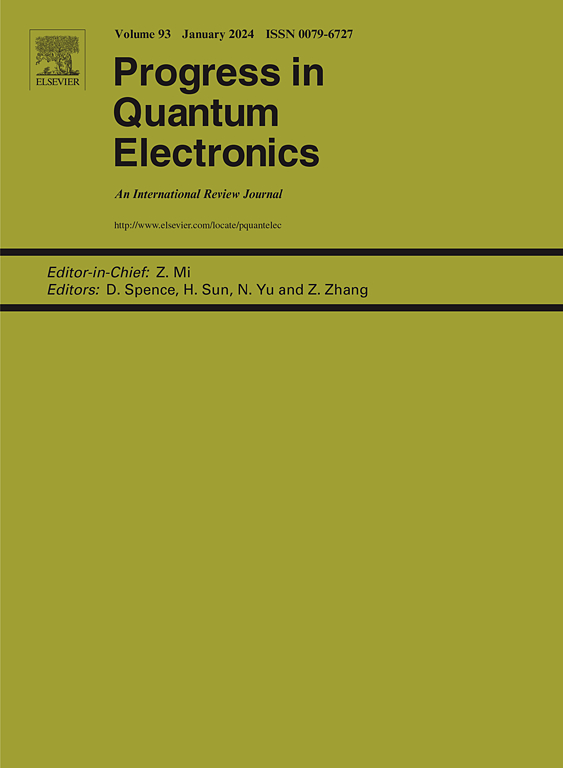Recent progresses on InGaN red micro-LEDs for display
IF 12.5
1区 物理与天体物理
Q1 ENGINEERING, ELECTRICAL & ELECTRONIC
引用次数: 0
Abstract
Micro-scale light-emitting diodes (micro-LEDs), with their high brightness, high resolution, and low power consumption, are emerging as a promising candidate for the next-generation display. Among them, InGaN red micro-LEDs, as a crucial component of full-color micro-displays, have attracted significant attention for their smaller size effect, higher thermal stability, and compatibility with blue and green micro-LED fabrication processes and so on, when compared to AlGaInP red micro-LEDs. However, for next-generation display technologies such as augmented reality (AR), InGaN red micro-LEDs still fall short of meeting the requirements. Specifically, the efficiency of InGaN red micro-LEDs with the ultra-small size needed for AR applications is still very low, necessitating a high working current density. Unfortunately, a high current density leads to a significant blueshift in the emission wavelength, which results in color deviation, failing to meet the requirements for red display devices. This review has introduced two approaches to address the aforementioned issues, namely enhancing the efficiency of InGaN red micro-LEDs or suppressing the blueshift, and has listed the performances of recent typical InGaN red micro-LEDs. Finally, the potential of InGaN red micro-LEDs in the full-color monolithic displays has been discussed.
显示用InGaN红色微型led的最新进展
微尺度发光二极管(micro- led)以其高亮度、高分辨率、低功耗的特点,正成为下一代显示器的理想选择。其中,InGaN红色微led作为全彩微显示屏的关键组成部分,与AlGaInP红色微led相比,具有更小的尺寸效应、更高的热稳定性以及与蓝绿微led制造工艺的兼容性等特点,备受关注。然而,对于增强现实(AR)等下一代显示技术,InGaN红色微型led仍然无法满足要求。具体来说,AR应用所需的超小尺寸InGaN红色微型led的效率仍然很低,需要高工作电流密度。不幸的是,高电流密度会导致发射波长出现明显的蓝移,从而导致颜色偏差,无法满足红色显示器件的要求。本文介绍了两种解决上述问题的方法,即提高InGaN红色微型led的效率或抑制蓝移,并列出了最近典型的InGaN红色微型led的性能。最后,讨论了InGaN红色微型led在全彩单片显示领域的潜力。
本文章由计算机程序翻译,如有差异,请以英文原文为准。
求助全文
约1分钟内获得全文
求助全文
来源期刊

Progress in Quantum Electronics
工程技术-工程:电子与电气
CiteScore
18.50
自引率
0.00%
发文量
23
审稿时长
150 days
期刊介绍:
Progress in Quantum Electronics, established in 1969, is an esteemed international review journal dedicated to sharing cutting-edge topics in quantum electronics and its applications. The journal disseminates papers covering theoretical and experimental aspects of contemporary research, including advances in physics, technology, and engineering relevant to quantum electronics. It also encourages interdisciplinary research, welcoming papers that contribute new knowledge in areas such as bio and nano-related work.
 求助内容:
求助内容: 应助结果提醒方式:
应助结果提醒方式:


